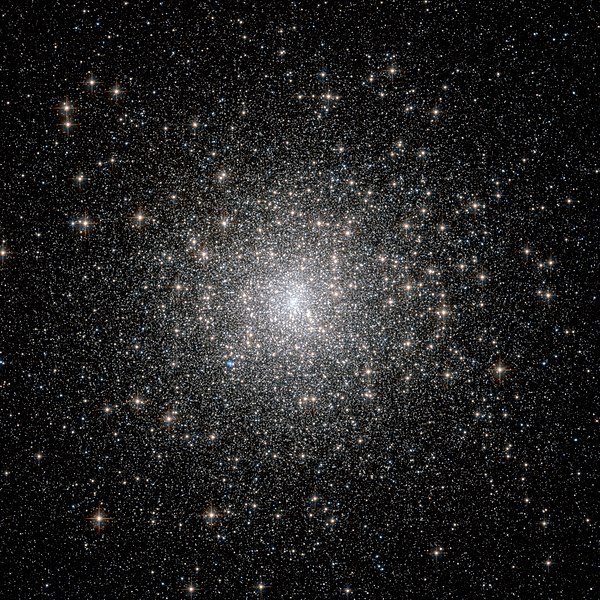Файл:Messier 15 HST.jpg
Перейти к навигации
Перейти к поиску

Размер этого предпросмотра: 600 × 600 пкс. Другие разрешения: 240 × 240 пкс | 480 × 480 пкс | 768 × 768 пкс | 1024 × 1024 пкс | 2048 × 2048 пкс | 4089 × 4089 пкс.
Исходный файл (4089 × 4089 пкс, размер файла: 4,55 МБ, MIME-тип: image/jpeg)
История файла
Нажмите на дату/время, чтобы посмотреть файл, который был загружен в тот момент.
| Дата/время | Миниатюра | Размеры | Участник | Примечание | |
|---|---|---|---|---|---|
| текущий | 09:42, 4 мая 2011 |  | 4089 × 4089 (4,55 МБ) | Originalwana | higher res |
| 21:12, 18 февраля 2011 |  | 1280 × 1280 (721 КБ) | Jmencisom | {{Information |Description ={{en|1=The dazzling stars in Messier 15 look fresh and new in this image from the NASA/Hubble Space Telescope, but they are actually all roughly 13 billion years old, making them some of the most ancient objects in the Unive |
Использование файла
Следующая страница использует этот файл:
Глобальное использование файла
Данный файл используется в следующих вики:
- Использование в af.wikipedia.org
- Использование в ca.wikipedia.org
- Использование в ce.wikipedia.org
- Использование в cs.wikipedia.org
- Использование в de.wikipedia.org
- Использование в diq.wikipedia.org
- Использование в en.wikipedia.org
- Использование в en.wikiversity.org
- Использование в eo.wikipedia.org
- Использование в eu.wikipedia.org
- Использование в fr.wikipedia.org
- Использование в gd.wikipedia.org
- Использование в id.wikipedia.org
- Использование в it.wikipedia.org
- Использование в it.wikibooks.org
- Использование в ja.wikipedia.org
- Использование в ko.wikipedia.org
- Использование в mg.wikipedia.org
- Использование в ml.wikipedia.org
- Использование в ms.wikipedia.org
- Использование в nds.wikipedia.org
- Использование в nl.wikipedia.org
- Использование в no.wikipedia.org
- Использование в pl.wikipedia.org
- Использование в pt.wikipedia.org
- Использование в simple.wikipedia.org
- Использование в sl.wikipedia.org
- Использование в tr.wikipedia.org
- Использование в tt.wikipedia.org
- Использование в uk.wikipedia.org
- Использование в www.wikidata.org
- Использование в zh-yue.wikipedia.org
- Использование в zh.wikipedia.org
